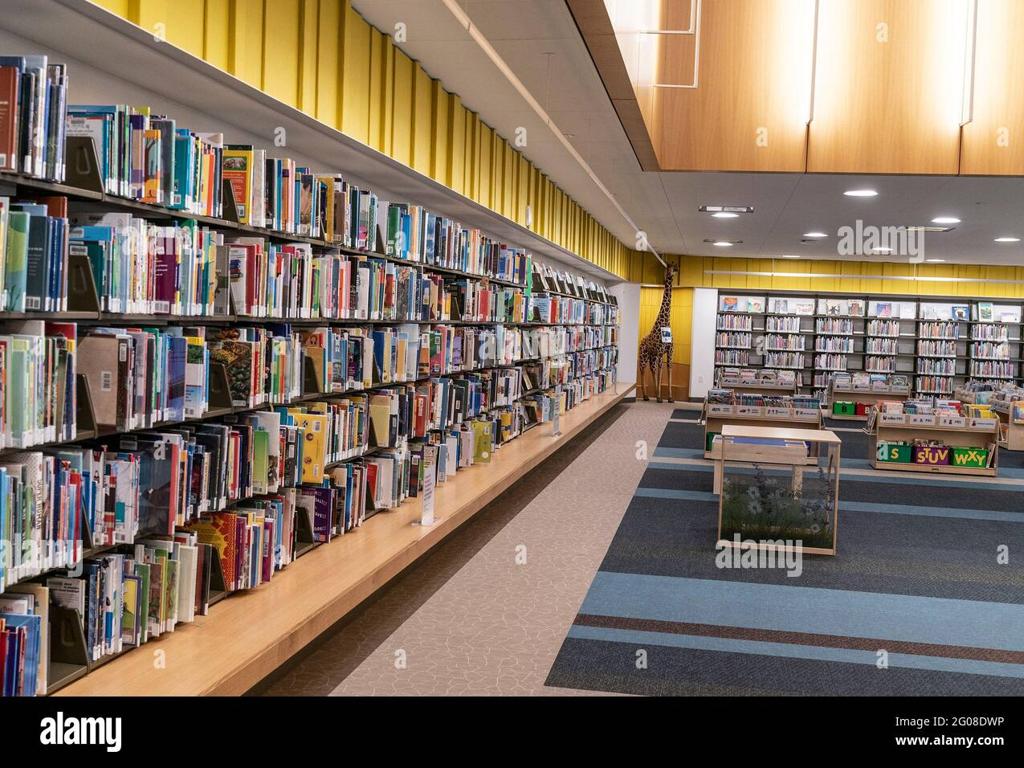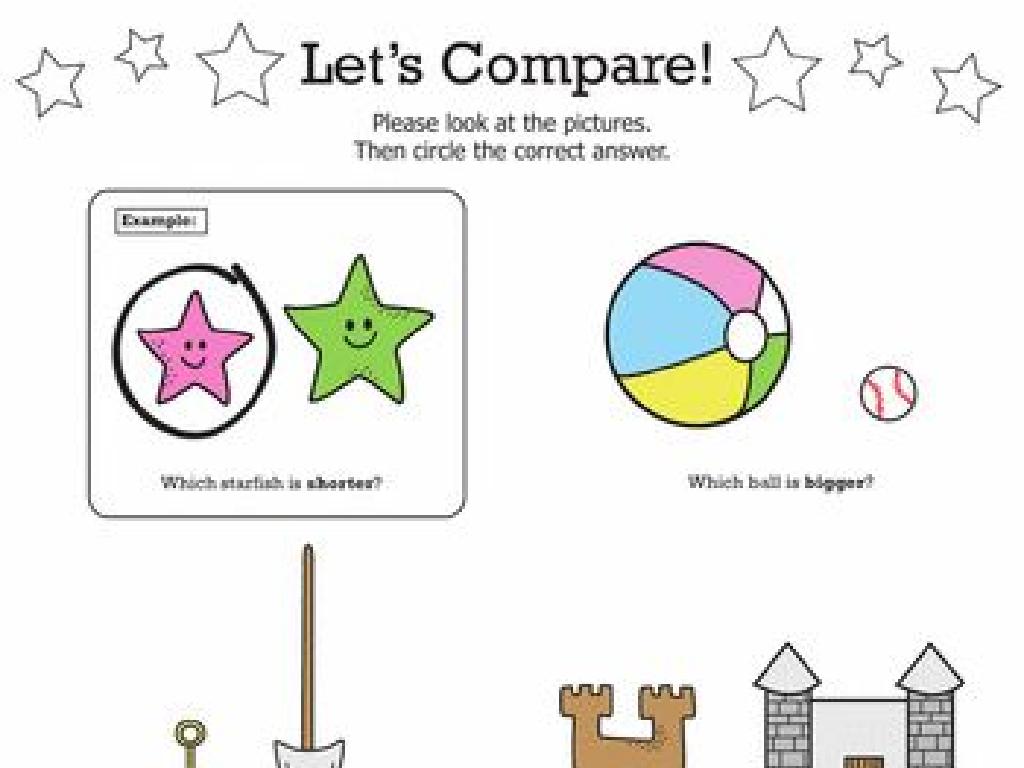Describe The Difference Between Related Words
Subject: Language arts
Grade: Fifth grade
Topic: Shades Of Meaning
Please LOG IN to download the presentation. Access is available to registered users only.
View More Content
Exploring Shades of Meaning
– Words with similar meanings
– Synonyms are words that are similar, but have slight differences, like ‘happy’ and ‘joyful’.
– Subtle differences matter
– ‘Angry’ can mean slightly annoyed or furious – the right word conveys the exact feeling.
– Impact of word choice in writing
– The words we choose can make our stories and essays more vivid and precise.
– Choosing words for effect in speech
– When we speak, selecting the right word can help us make a stronger impression.
|
This slide introduces the concept of shades of meaning, emphasizing the importance of word choice in both writing and speech. Students should understand that while some words appear to be interchangeable, their nuances can greatly affect the message being conveyed. Discuss how synonyms can have varying intensities or connotations and how choosing a word with the right shade of meaning can enhance communication. Provide examples to illustrate how a slight change in word choice can alter the tone or clarity of a sentence. Encourage students to think critically about the words they encounter and to practice selecting the most appropriate words for their own writing and speaking.
Exploring Related Words: Shades of Meaning
– What are related words?
– Words that are similar but have different intensities
– Examples: ‘happy’, ‘joyful’, ‘elated’
– ‘Happy’ is pleased, ‘joyful’ is very happy, ‘elated’ is extremely happy
– Find synonyms for ‘sad’
– Think of words like ‘upset’, ‘gloomy’, ‘miserable’
– Discuss with a partner
– Share your words and compare their intensity
|
This slide introduces the concept of related words, which are words that have similar meanings but differ in intensity or detail. Use ‘happy’, ‘joyful’, and ‘elated’ to show how similar words can express different levels of emotion. Encourage students to work with a partner to brainstorm synonyms for ‘sad’ and discuss the subtle differences in meaning. This activity will help students understand that word choice can greatly affect the nuance and clarity of their expression. It’s a foundational skill for developing a rich vocabulary and improving descriptive writing.
Connotation and Denotation: Shades of Meaning
– Denotation: Dictionary meaning
– Connotation: Emotional association
– ‘House’ vs. ‘Home’
– ‘House’ implies the structure; ‘Home’ suggests comfort and family.
– Understanding word nuances
– Words with similar denotations can have different connotations affecting their use.
|
This slide introduces students to the concepts of connotation and denotation, which are important for understanding the shades of meaning between related words. Denotation refers to the literal, dictionary definition of a word, while connotation encompasses the feelings and associations that the word evokes beyond its literal meaning. For example, ‘house’ and ‘home’ both refer to a place where someone lives, but ‘home’ often includes emotional associations of family, warmth, and security. Encourage students to think about the connotations of words they use every day and how choosing one word over another can change the meaning of a sentence. This understanding is crucial for developing their descriptive writing skills and word choice.
Shades of Meaning in Action
– Words have ‘temperatures’
– Example: ‘Cold’, ‘Chilly’, ‘Freezing’
– ‘Cold’ is cool, ‘Chilly’ is colder, ‘Freezing’ is very cold
– Class activity: Rank word intensity
– Arrange ‘Cold’, ‘Chilly’, ‘Freezing’ from least to most intense
– Understand subtle differences
|
This slide introduces the concept of ‘Shades of Meaning’ by comparing words with similar meanings but different intensities, likened to temperatures. Use the example of ‘Cold’, ‘Chilly’, and ‘Freezing’ to illustrate how words can convey varying degrees of intensity. For the class activity, students will engage in an interactive exercise where they order these words from least to most intense, fostering a deeper understanding of nuanced language. Teachers should prepare additional examples and guide students to think critically about word choice in their daily language use. Encourage students to discuss why an author might choose one word over another and the effect this has on the reader.
Choosing the Right Word: Shades of Meaning
– Context determines word choice
– Words express different intensity
– ‘Excited’ is less intense than ‘thrilled’, and ‘terrified’ shows extreme fear
– Role-play: Describe rollercoaster feelings
– Imagine being on a rollercoaster: what word fits your emotion best?
– Excited vs. Thrilled vs. Terrified
|
This slide aims to teach students how the context of a situation can influence the choice of words they use, especially when words have similar meanings but differ in intensity. Use the rollercoaster scenario to have students role-play and explore the nuances between being excited, thrilled, or terrified. This will help them understand that word choice can greatly affect the description and feeling of a sentence. Encourage students to think of other scenarios and words that have shades of meaning to enhance their vocabulary and expression.
Synonyms and Nuance
– Synonyms: Words with similar meanings
– Understanding Nuance
– Nuance: A slight, often important, difference
– Activity: Crafting Sentences
– Use synonyms to write sentences showing nuance
– Discovering subtle differences
– Example: ‘Shout’, ‘yell’, ‘scream’ – how are they different?
|
This slide introduces the concept of synonyms and nuances to the students. Synonyms are words that have similar meanings, but they often carry slight differences in their usage, which we refer to as nuances. These nuances can change the meaning of a sentence subtly but significantly. The class activity involves students writing sentences using synonyms that have different nuances to understand these subtle differences better. For example, ‘shout’, ‘yell’, and ‘scream’ all involve using a loud voice, but the context in which they are used can convey different levels of intensity or emotion. Teachers should encourage students to think critically about word choice and how it affects the meaning of their sentences. The activity will help students enhance their vocabulary and improve their writing skills.
Let’s Practice: Shades of Meaning
– Find synonyms for ‘walk’
– Look for words like ‘stroll’, ‘march’, ‘stride’
– Arrange words by intensity
– Which word shows the least/most energy?
– Discuss usage in a story
– How does ‘saunter’ differ from ‘trudge’ in a narrative?
– Share findings with class
|
This group activity is designed to help students understand the concept of ‘shades of meaning’. Students will work together to find synonyms for the word ‘walk’ and then arrange these words in order of intensity or energy. They will discuss how the use of each word can affect the tone and imagery in a story, considering how a character’s mood or situation might influence their choice of movement. After the discussion, each group will share their list and examples with the class, allowing students to see the variety of options and how word choice can subtly change the meaning of a text. Encourage students to think creatively and support their choices with reasons.
Shades of Meaning Challenge
– Engage in a matching game
– Work in groups with word cards
– Each group gets a unique set of words
– Arrange words by intensity
– From weakest to strongest meaning
– Match words to scenarios
– Use context to decide placement
|
This class activity is designed to help students understand the concept of ‘shades of meaning’ by arranging words with similar meanings into a sequence based on their intensity. For example, the words ‘whisper,’ ‘speak,’ ‘shout,’ and ‘scream’ all relate to talking but with increasing levels of volume and intensity. Provide each group with a set of word cards and scenarios where these words could be used. Students will collaborate to place the words in order that they believe best fits the scenario’s context. This activity encourages critical thinking and discussion among students about word choice and its impact on communication. Possible scenarios could include reactions to a surprise, levels of happiness, or degrees of urgency. This will help students grasp the nuances in word meanings and enhance their vocabulary skills.
Conclusion: The Power of Word Choice
– Importance of shades of meaning
Understanding subtle differences helps us express exactly what we mean.
– Precise words enhance communication
Choosing the right word can make our sentences clearer and more interesting.
– Reflect on today’s learning
Think of one new thing you’ve learned about word choice.
– How will you use this knowledge?
Consider how this lesson can help you in writing stories or describing feelings.
|
This slide wraps up the lesson by emphasizing the importance of understanding the nuances in word meanings, known as shades of meaning. It’s crucial for students to recognize that word choice can greatly affect the clarity and impact of their communication. By using precise words, they can convey their thoughts and emotions more effectively. Encourage students to share what they’ve learned and to think about how they can apply this knowledge in their daily lives, particularly in writing assignments and verbal interactions. This reflection helps solidify the concepts taught and encourages the application of these skills beyond the classroom.






